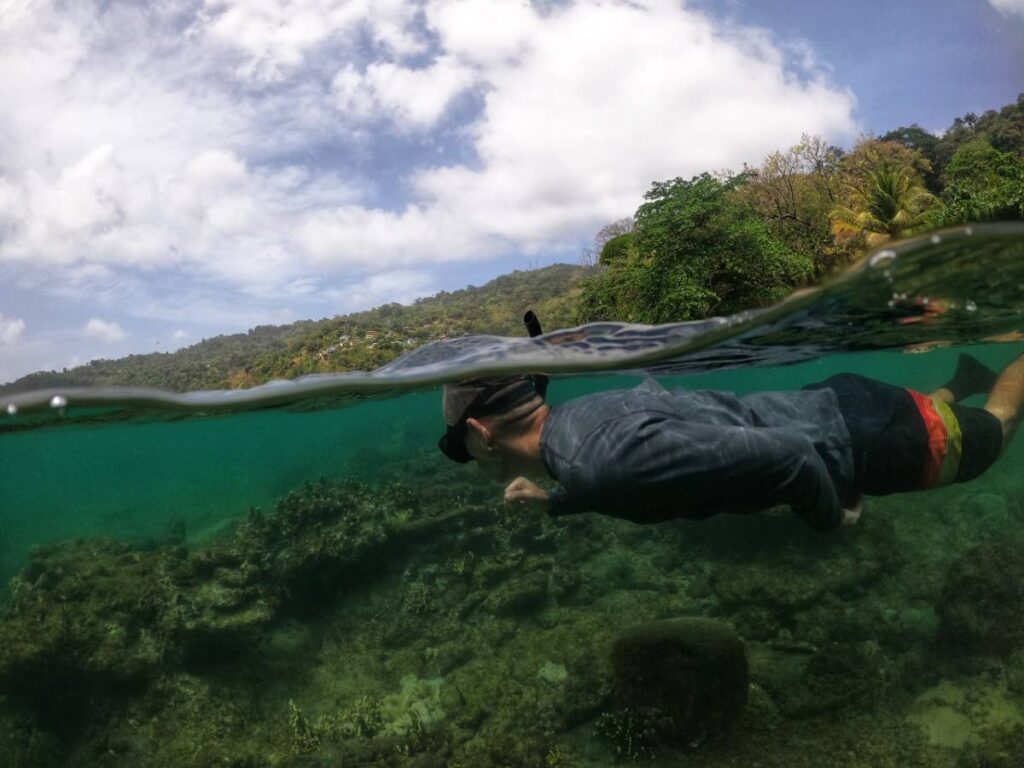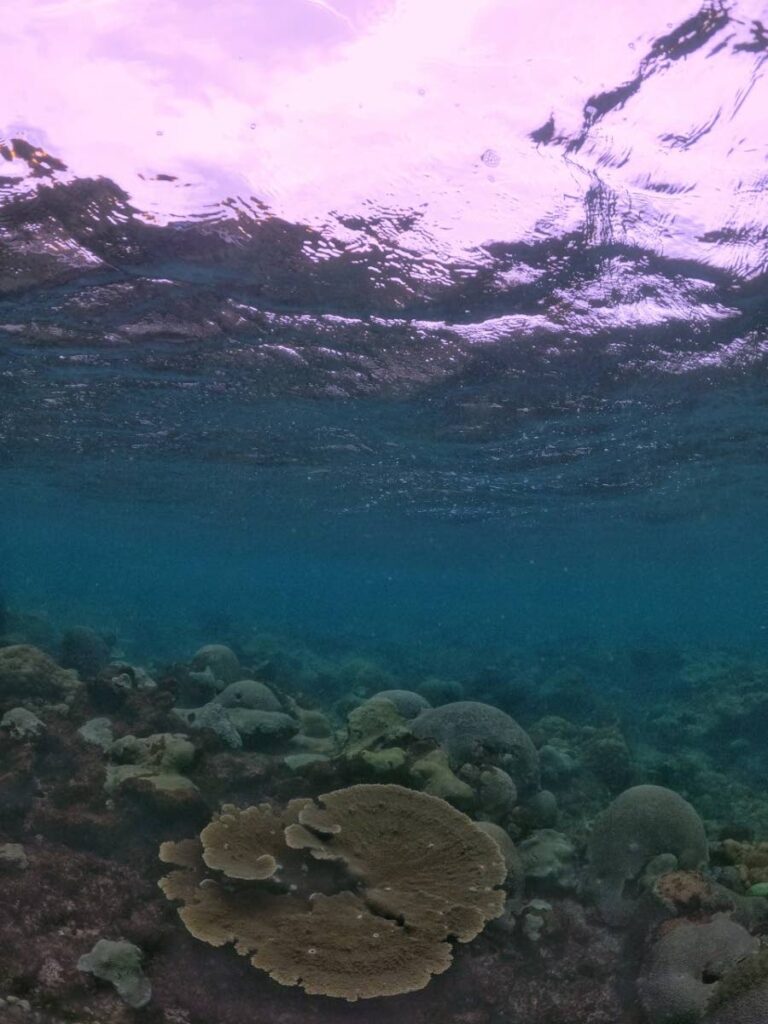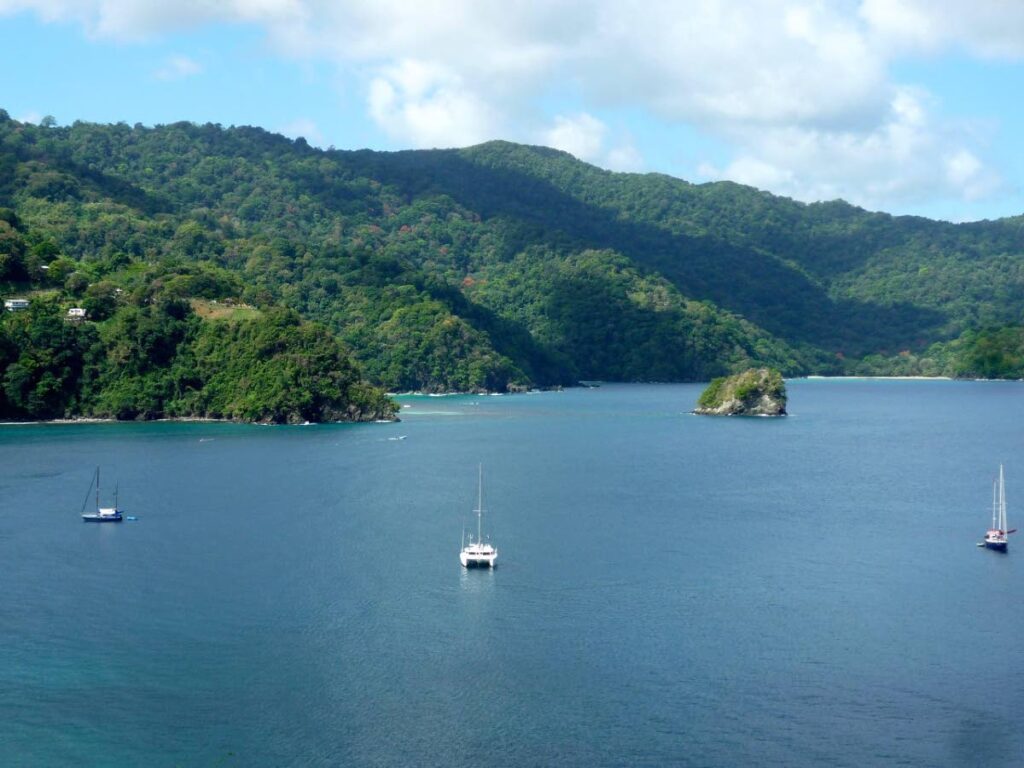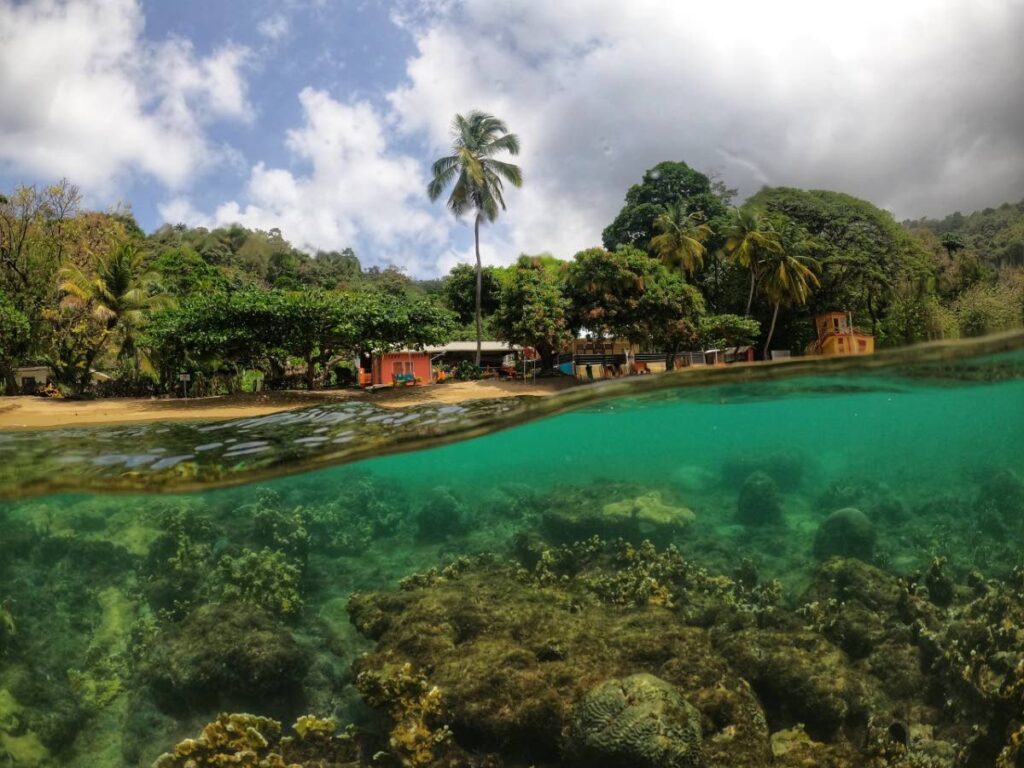Underwater at Man-o-War Bay

There’s plenty to see just below the shoreline of most Tobago beaches. Anjani Ganase offers over and under water views from the Easter weekend at Charlotteville on the northeast of the island.
Charlotteville is a favourite one stop shop for a weekend away. Slip into an easy village vibe. Then get to the beaches – so many little sandy coves – within the Man O’ War Bay. Go for a snorkel just offshore, or dive deeper. These sheltered beauties feel untouched and are not crowded. Man-o-War Bay is the largest deep water harbour for the island; and spans about five squared-kilometres. Rural and laid-back Charlotteville presents the iconic Caribbean island vibe, a contrast to the built up coastlines of southwest Tobago.
Charlotteville Beach
The main beach on Man-o-War Bay extends about one kilometre in length and is the focal point of a mainly fishing community. A walk along the beach is the typical commute from the Campbleton homes and guest houses to the market, restaurants and shops. There are two patch reefs located where the Windward Road dips to the beach. In front of the Man-o-War cottages there’s Turpin’s Reef and just offshore where the Government rest house used to be located, there’s Rest House reef. The reefs run right up the water’s edge, so there should be no running and jumping into the water at these spots and life guards have marked off the area. While the shallow margins of the reefs have definitely seen some degradation and algae and zoanthid overgrowth from water pollution, portions of these reefs are still home to healthy mountainous star coral and yellow pencil coral.

On a quiet evening the heads of juvenile green or hawksbill turtles can be seen bobbing around over the reef. The best time to snorkel is at high tide; at low tide there’s the possibility that you will hit and damage the reef or encounter fire corals. The fish life is diverse with curious angelfish and grunts and with a close look you may encounter cryptic scorpionfish or a flounder. Along the western edge of the main beach, you can snorkel where the Campbleton cliffs meet the sea which is vibrant and harbours many schools of bait fish. You may glimpse bigger fish hunting in the bait balls but be wary of the diving pelican that swoops in for food. There is a shallow alcove with lots of corals, sea fans and sponges before the seascape descends into the deep.
Pirates Bay
Pirates Bay is located on the north-east of Man-o-War Bay. It is a picturesque beach with perfect views at sunset. Get to Pirates Bay by climbing the dirt road that meanders along the cliff at the edge of the village. A recent landslip makes the trek by vehicle treacherous. The walk takes about 15 minutes and there are roughly 150 steps down to the beach. Keep an eye out for the mot mots that hang out in the shade of the bamboo. You can reach Pirates Bay by boat from the jetty for a small fee that includes the return ride. Coral communities congregate on the rocky out crops along the sides of the bay. On both sites, you’ll find shallow swim through with small colonies of Elkhorn corals, sea plumes and sponges. On the rare occasion you may encounter some juvenile marine turtles or a green moray eel hiding within the crevices.

Hermitage Bay
On the western side of Man-o-War, you’ll find one of the most extensive reefs in the bay. Hermitage Bay is a 15-minute drive from Charlotteville along the L’anse Fourmi – Charlotteville road. Look for the right turn off to Hermitage Bay along a stretch of dirt road. This tiny beach faces north and is prone to north swell action during the winter months. The result is a pebbly beach on the eastern side where the river runs into the bay, while the fine sand builds up in the sheltered area on the opposite side of the beach. The reef spans about half of this tiny bay along the western side. Again, while much of the nearshore reef has suffered significant loss and is mostly covered in algae, a five minutes swim out along the western margin of the bay will lead to colonies of sizeable brain and boulder corals, with some plating Elkhorn corals in between. Schools of creole wrasse and blue tangs swirl past as they move along the reef edge foraging on the algae. The reef edge gets deep enough to practice freediving, while looking into the reef framework for any hidden residents.

Lovers Bay
West of Charlotteville is a tiny pink sand beach called Lovers Bay. This bay faces Booby Island, also known as Big Rock, which is about 500 metres away and between these two locations there is an incredible reef for those who like to dive or do some advanced snorkelling. This beach and reef are only accessible by boat, when the conditions are calm. The snorkel is best on a low tide, which allows snorkellers to view the coral present on the slopes of the reefs that are slightly deeper. Sea plumes are common on the reef, along with boulder corals and Elkhorn coral. This is a dive site where I usually find visiting eagle rays and turtles.

When you visit Charlotteville, remember that Man-o-War Bay and its resident communities, onshore and offshore, are significant centres of the Northeast Tobago Man and the Biosphere Reserve designated in 2021 by Unesco. These are sites where man lives in harmony with nature and which are recognised internationally as areas worth cherishing, preserving and protecting.

Comments
"Underwater at Man-o-War Bay"